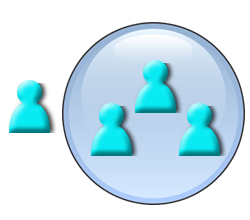I just presented Ilio Krumins-Beens’ [and my paper] on unbounded collaboration between the product owner and development team at the 41st Hawaii International Conference on System Sciences. (I’ll link off to the paper when the transaction is published on the IEEE site.)
 HICSS is an interesting mix of academics and practitioners. On the list of presenters in the agile mini-track were Jeff Sutherland, Stephen Cohen from Microsoft, and Gabrielle Benefield from Yahoo as well as researchers Ann Fruhling from the University of Nebraska at Omaha, Kevin Kwiat from the Air Force Research Laboratory, and David F. Rico.
HICSS is an interesting mix of academics and practitioners. On the list of presenters in the agile mini-track were Jeff Sutherland, Stephen Cohen from Microsoft, and Gabrielle Benefield from Yahoo as well as researchers Ann Fruhling from the University of Nebraska at Omaha, Kevin Kwiat from the Air Force Research Laboratory, and David F. Rico.
HICSS is an instance where the academy has invited us developers into their living room to discuss what we do, the way we actually do it.
There’s a huge disconnect between what I practice as a software developer and what many institutions of higher learning teach.
Theoretical exercises in waterfall practices are not helpful precursors to TDD, pairing, continuous integration, refactoring, interdisciplinary collaboration, self-organizing teams, etc. etc.
Arguably, they are not even helpful precursors to waterfall as it’s actually practiced. If you think XP requires experienced developers what the heck do you get when you make someone with little experience architect a market trading system in UML!
We need the academy to understand us. They not only train our workforce, their research informs policies, standards and business management practices that shape government and industry expectations.
We need business schools that train prospective CXO’s to build lean businesses that will in turn build out agile/lean IT and product development organizations.
Another big barrier to agile adoption is lack of empirical support for the benefits of specific Lean, Scrum and XP practices. We need original research that correlates to the obvious things: quality, risk mitigation, market performance, productivity and cost reduction.
I’d also really love to see original research on how agile, highly collaborative practices correlate to ethical behavior on the part of individuals and organizations, gender and ethnic diversity, and sustained innovation.

 A development team may communicate to a product owner only during formal inspection points. They limit co-work to the immediate needs of the project and not range to larger questions and concerns. Under the pretext of “single, wringable neck” they shield themselves from the struggle to shape a business outcome and stand at a distance from the product owner.
A development team may communicate to a product owner only during formal inspection points. They limit co-work to the immediate needs of the project and not range to larger questions and concerns. Under the pretext of “single, wringable neck” they shield themselves from the struggle to shape a business outcome and stand at a distance from the product owner. In my business context, I can’t cost-justify the kind of measurement Jeff Sutherland illustrates in his
In my business context, I can’t cost-justify the kind of measurement Jeff Sutherland illustrates in his  The types of people who seek out a pairing environment are social, take initiative and want to engage in the big picture. These types of developers create a vital workplace and contribute more fully to product development. I’ve written several papers getting at the relationship between collaboration and innovation.
The types of people who seek out a pairing environment are social, take initiative and want to engage in the big picture. These types of developers create a vital workplace and contribute more fully to product development. I’ve written several papers getting at the relationship between collaboration and innovation.